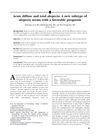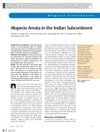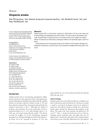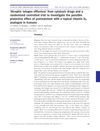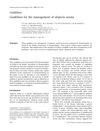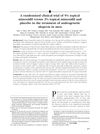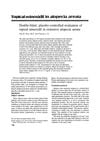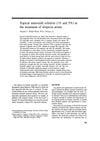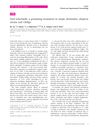Alopecia Areata: A Clinical Analysis
December 2013
in “
Journal of Evolution of Medical and Dental Sciences
”
TLDR Alopecia areata causes patchy hair loss due to unknown factors, affecting all ages and genders.
Alopecia areata was described as an emotionally devastating dermatologic condition characterized by patchy hair loss, primarily on the scalp but potentially affecting other body areas. It affected both males and females equally and could begin at any age, though it was most common in children and young adults. The exact cause was unknown, but factors such as autoimmune responses, genetics, atopic conditions, and emotional stress were implicated. The condition was marked by non-scarring, round or oval patches of hair loss, with the presence of exclamation mark hairs at the active margins being a diagnostic hallmark. Variants included alopecia totalis and universalis, with potential associated changes like nail involvement and vitiligo. Historically, the understanding of alopecia areata evolved from fungal to autoimmune theories, reflecting changes in medical knowledge over time.
